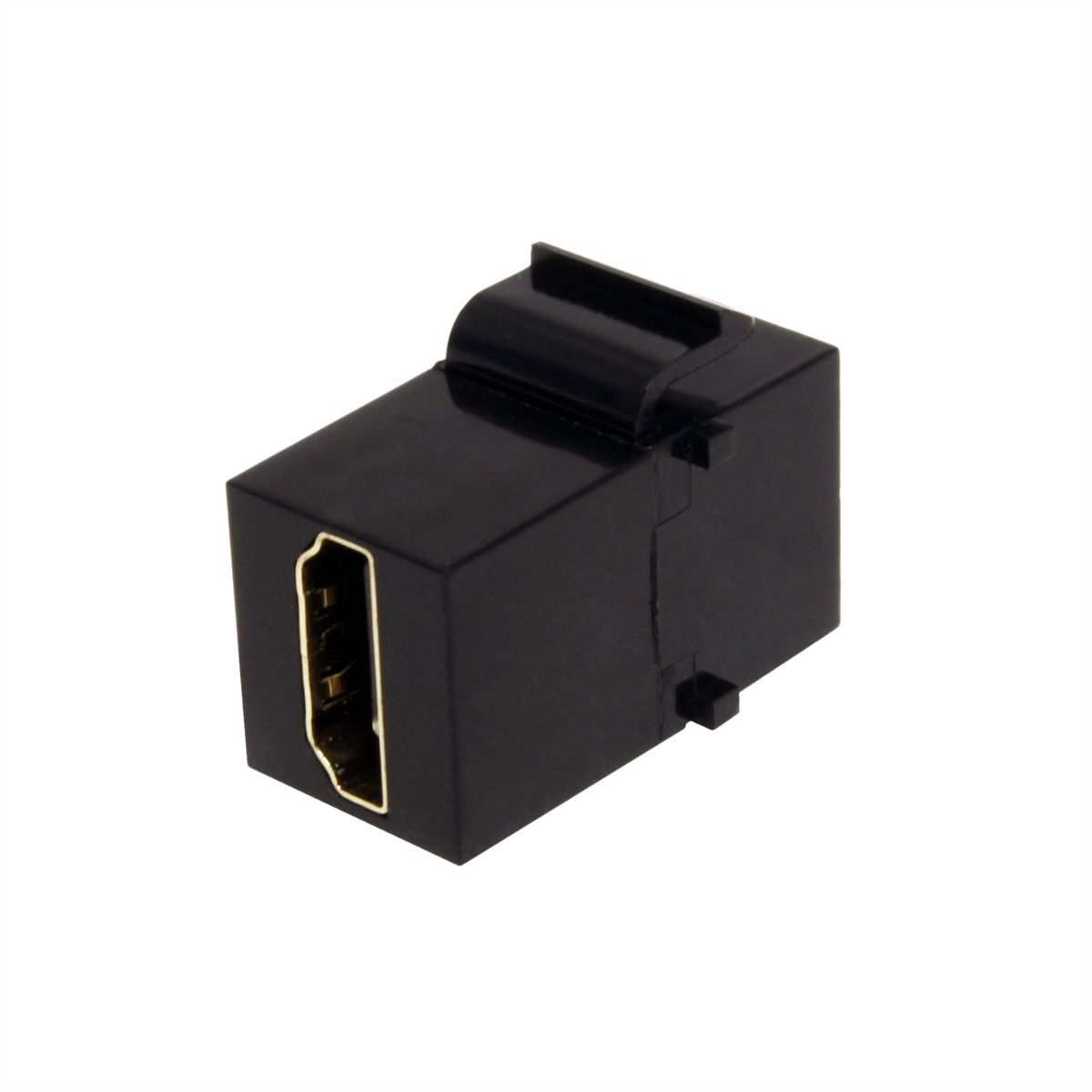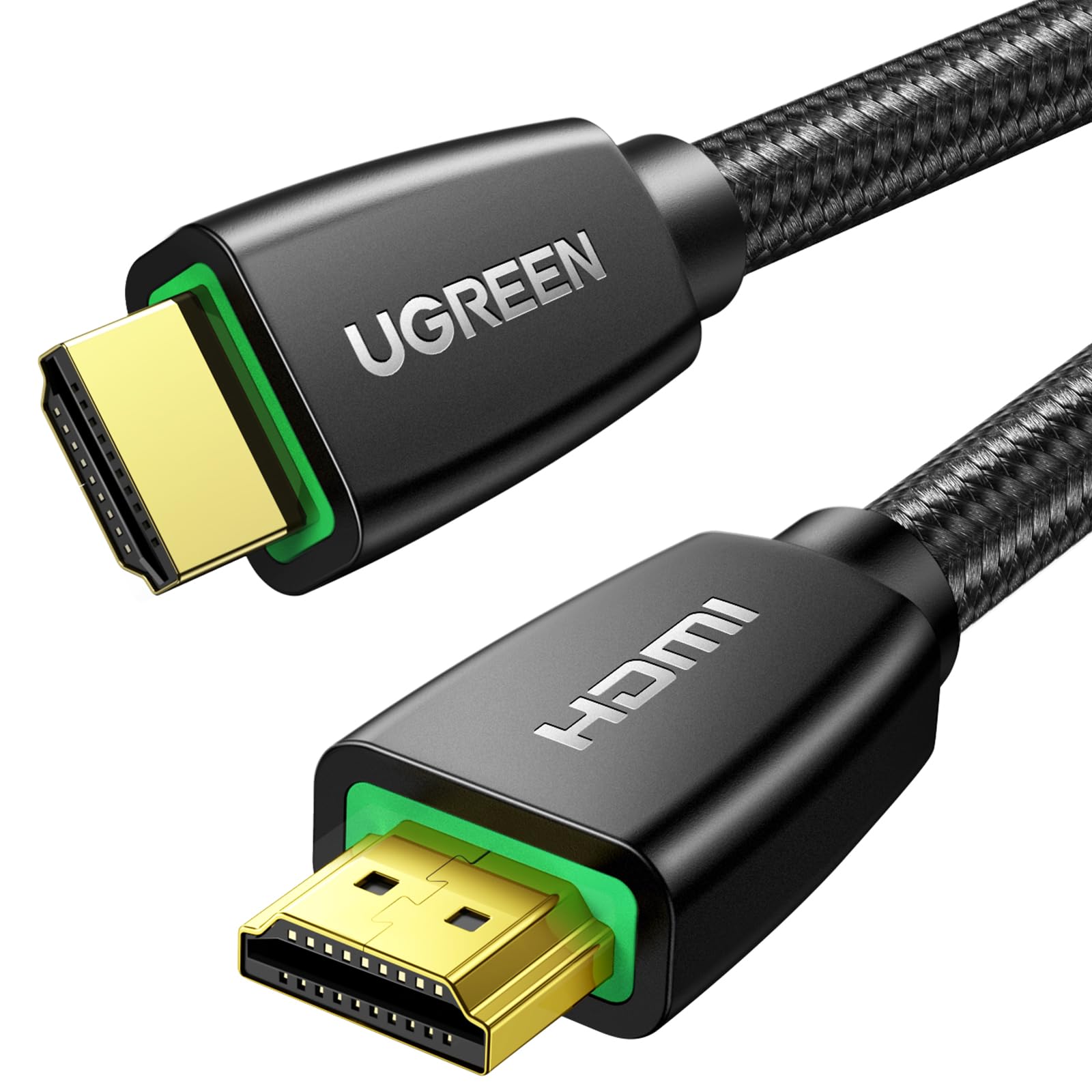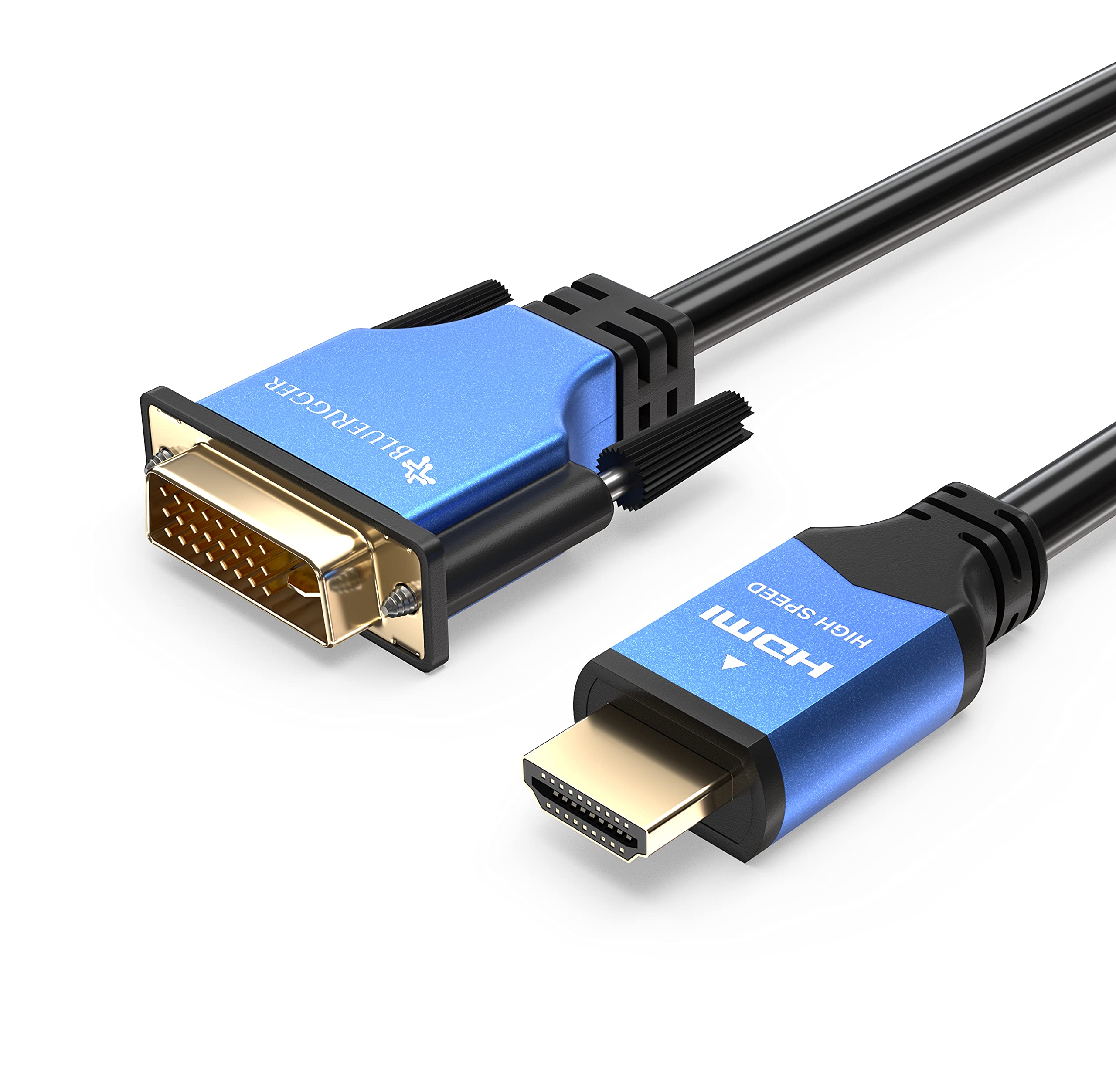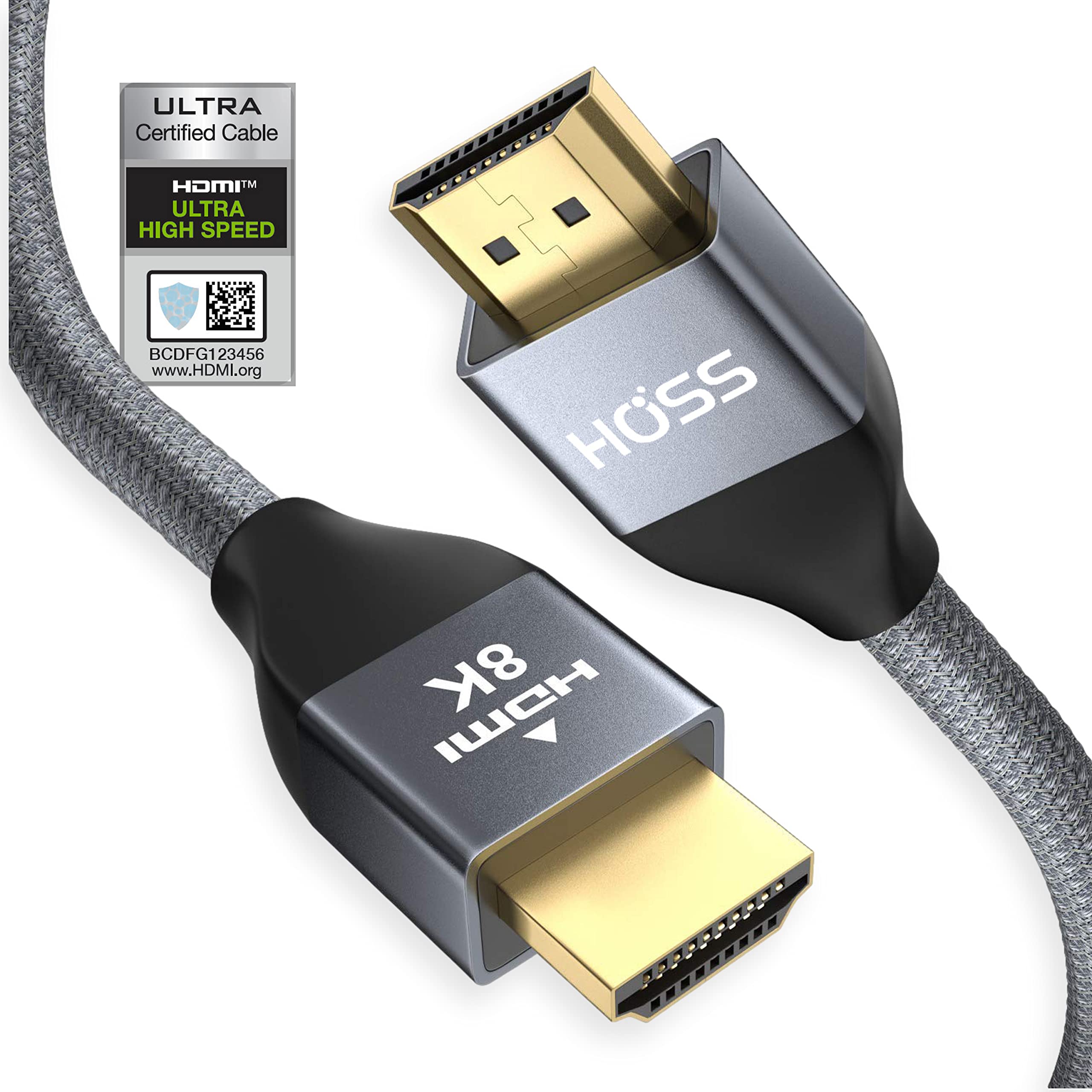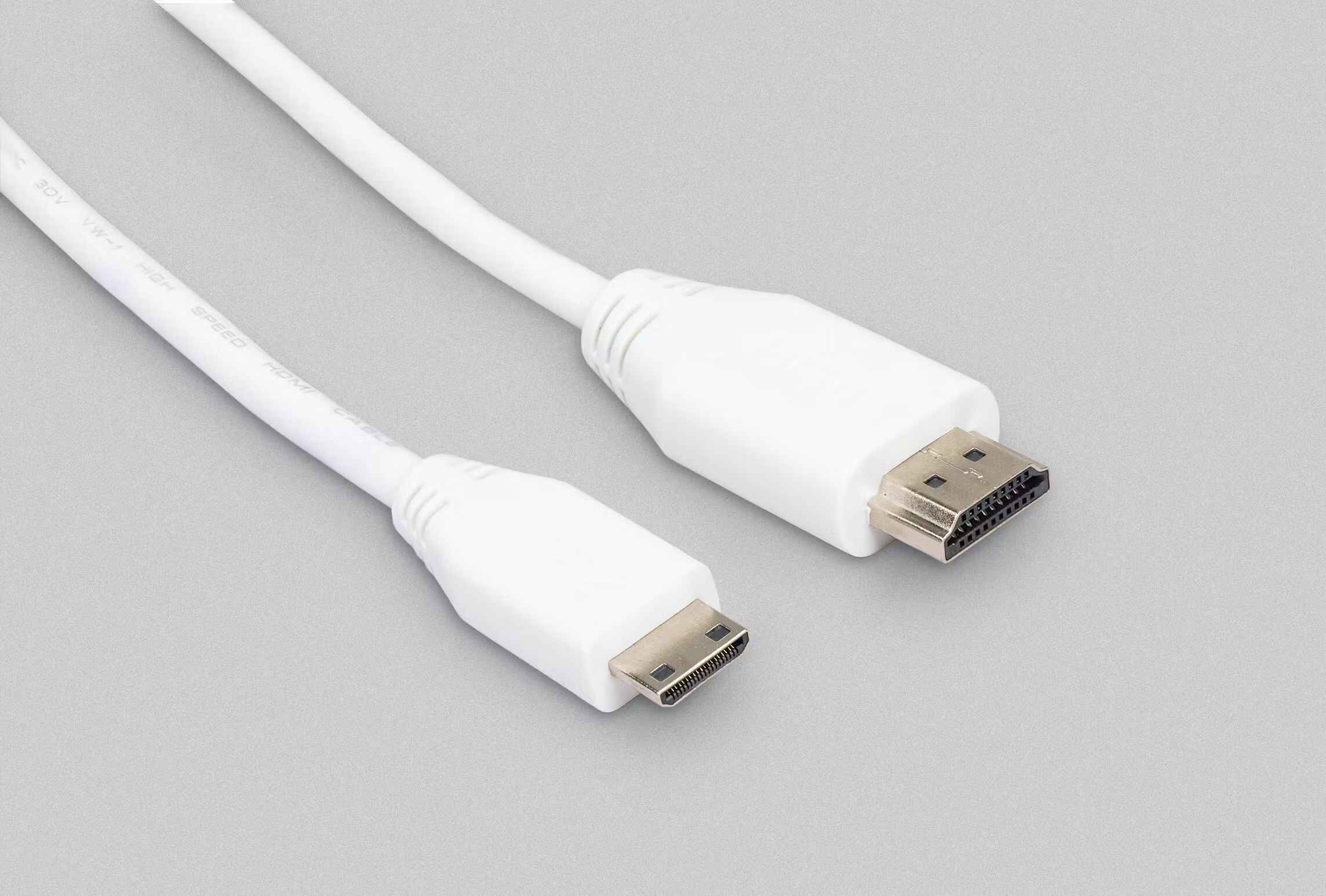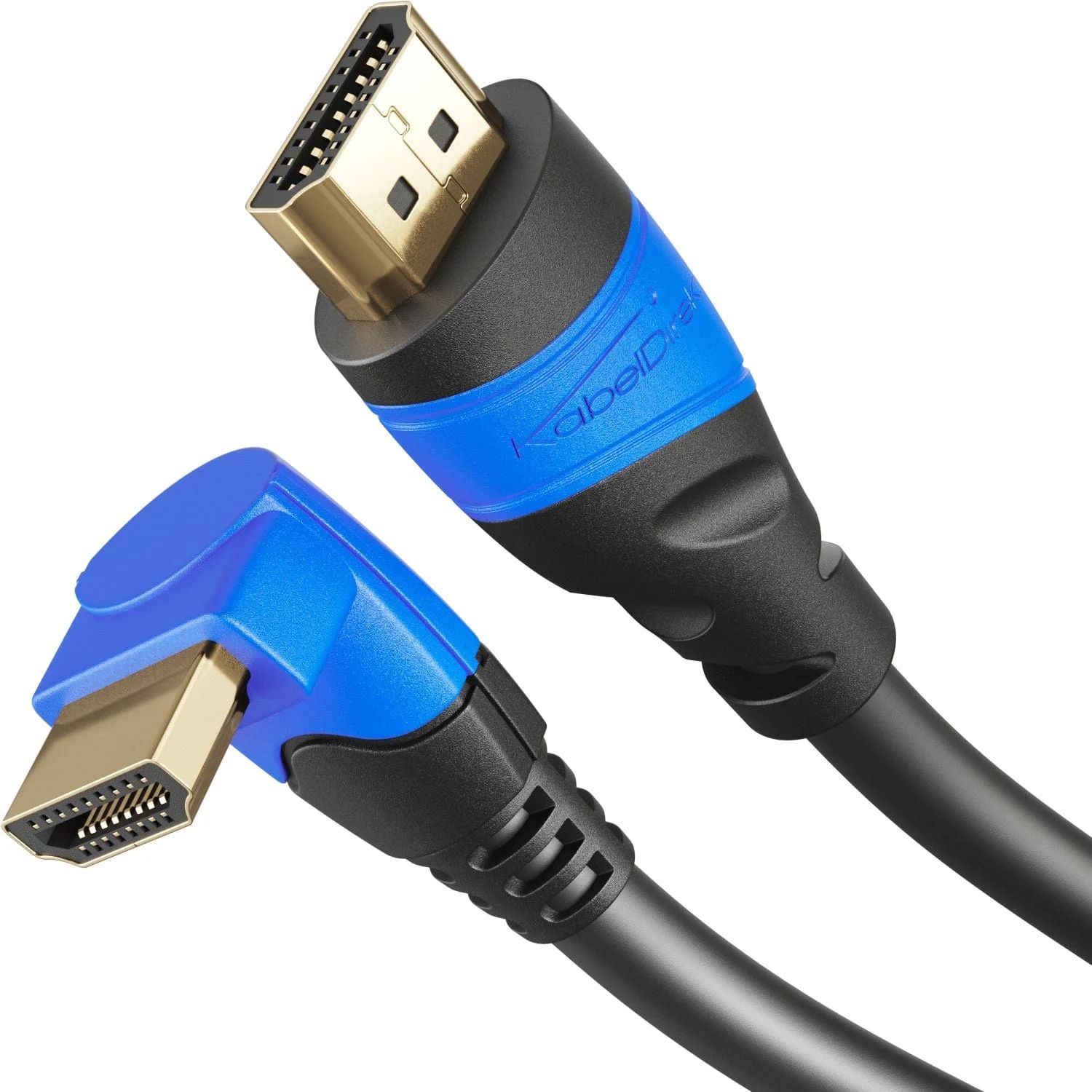Introduction
Welcome to the world of high-definition multimedia! Whether you’re setting up a home theater system, connecting your gaming console, or hooking up your laptop to a big-screen TV, you’ve probably come across the term “HDMI cable.” But what exactly is an HDMI cable and why does it matter?
HDMI, short for High-Definition Multimedia Interface, is a technology that allows for the transfer of audio and video signals in high definition between devices. It has become the industry standard for connecting various multimedia devices such as TVs, Blu-ray players, game consoles, and computers, providing a seamless and high-quality audiovisual experience.
With the increasing number of HDMI cable options available on the market, it’s natural to wonder if the choice of cable really makes a difference. Do you need to invest in an expensive, high-end HDMI cable, or will a more affordable option provide the same level of performance?
In this article, we will explore the different types of HDMI cables, the variations between HDMI versions, as well as the factors to consider when choosing the right HDMI cable for your needs. We will also address common misconceptions surrounding the quality and performance of HDMI cables.
So, whether you’re a tech enthusiast looking to upgrade your setup or a casual user who wants a better understanding of HDMI cables, read on to unravel the mysteries behind this crucial component of your audiovisual experience.
What is an HDMI cable?
An HDMI cable is a digital connector that carries both high-definition audio and video signals between multimedia devices. It provides a single cable solution for transmitting uncompressed, high-quality audio and video data, resulting in a crisp and vibrant viewing experience.
HDMI cables utilize a standardized connector with 19 pins, which allows for the transmission of a wide range of audiovisual formats, including standard definition, high definition, and even 4K Ultra HD resolutions. These cables can handle various types of multimedia content, such as movies, TV shows, games, and other digital media.
One of the main advantages of HDMI cables over their analog counterparts, such as VGA or composite cables, is the ability to transmit digital signals. Digital transmission ensures that there is no loss of quality during the transfer, resulting in a sharper and more accurate representation of the original content.
Furthermore, HDMI cables also support the transmission of additional audio formats, such as Dolby TrueHD and DTS-HD Master Audio, which provide immersive surround sound experiences. This makes HDMI cables an essential component for home theaters and audio setups.
Another notable feature of HDMI cables is their support for two-way communication between devices. This means that devices connected via HDMI can exchange information and commands, allowing for features like remote control functionality and automatic display settings. For example, when you connect a Blu-ray player to a TV using an HDMI cable, the TV can automatically adjust its resolution and aspect ratio to match the content being played.
Overall, HDMI cables offer a convenient and versatile solution for connecting multimedia devices and enjoying high-definition audio and video content. Whether you’re connecting a Blu-ray player, a gaming console, or a computer to your TV, using an HDMI cable ensures that you get the best possible audiovisual experience.
Different types of HDMI cables
When choosing an HDMI cable, you may come across different types and variations. It’s essential to understand these differences to ensure that you select the right cable for your specific needs. Here are the main types of HDMI cables:
1. Standard HDMI: This is the most common type of HDMI cable available. It supports resolutions up to 1080p (Full HD) and is suitable for connecting devices like TVs, DVD players, and gaming consoles.
2. High-Speed HDMI: High-Speed HDMI cables are designed to handle higher resolutions and refresh rates. They support 4K Ultra HD, 3D content, and refresh rates up to 120Hz. These cables are ideal for advanced home theater setups and gaming systems that require higher bandwidth.
3. Premium High-Speed HDMI: Premium High-Speed HDMI cables are certified to meet the highest standards set by HDMI Licensing LLC. They support the same features as High-Speed HDMI cables but undergo additional testing to ensure optimal performance. These cables are recommended for premium setups or when using long cable lengths.
4. Ultra High-Speed HDMI: Ultra High-Speed HDMI cables are the latest addition to the HDMI family. They support the most advanced video and audio formats, including 8K resolution at 60Hz and 4K resolution at 120Hz. These cables are intended for future-proofing your setup to accommodate upcoming technologies.
It’s important to note that the different types of HDMI cables mentioned above primarily refer to their capabilities and supported features rather than physical differences. The physical appearance of the HDMI connector remains consistent across these types.
Additionally, it’s worth considering the length of the HDMI cable you require. HDMI cables are available in various lengths, ranging from a few feet to over 50 feet. Keep in mind that longer cables may experience signal degradation, so it’s advisable to use an active HDMI cable or a signal booster for lengths beyond 25 feet.
Now that you have a better understanding of the different types of HDMI cables, you can make an informed decision based on your specific requirements for resolution, refresh rates, and future compatibility.
The difference between HDMI versions
Over the years, HDMI technology has evolved, resulting in different versions of HDMI cables. Each version offers improvements in terms of bandwidth, capabilities, and supported features. Here’s a breakdown of the main HDMI versions:
1. HDMI 1.0 and 1.1: These early versions introduced the basic functionality of HDMI, supporting resolutions up to 1080p and eight audio channels. However, they did not include support for advanced audio formats like Dolby TrueHD and DTS-HD.
2. HDMI 1.2: HDMI 1.2 added support for one-bit audio formats such as Super Audio CD’s Direct Stream Digital (DSD) and increased the maximum audio sample frequency to 192kHz. It also introduced the ability to control HDMI devices using Consumer Electronics Control (CEC).
3. HDMI 1.3 and 1.3a: HDMI 1.3 brought significant improvements, including support for higher resolutions such as 1440p and 1600p, increased color depth, and the ability to transmit Dolby TrueHD and DTS-HD Master Audio lossless audio formats. HDMI 1.3a addressed some minor issues and added support for the xvYCC color space.
4. HDMI 1.4: HDMI 1.4 introduced several features, including support for 3D content, an Audio Return Channel (ARC) to transmit audio from the TV back to the receiver, and an Ethernet channel for sharing an internet connection between devices. It also added support for 4K resolution at 30Hz.
5. HDMI 2.0: HDMI 2.0 increased the maximum bandwidth from 10.2 Gbps to 18 Gbps, allowing for higher resolutions and refresh rates. It added support for 4K resolution at 60Hz, 3D at 1080p, and the wide color gamut (Rec. 2020). HDMI 2.0 also introduced support for the Consumer Electronics Control over HDMI (CEC) enhancements.
6. HDMI 2.1: HDMI 2.1 is the latest version and offers significant advancements in bandwidth, supporting up to 48 Gbps. It enables higher resolutions, such as 8K at 60Hz and 4K at 120Hz, along with dynamic HDR, Variable Refresh Rate (VRR), Quick Frame Transport (QFT), and eARC (enhanced Audio Return Channel) for higher quality audio.
Although newer HDMI versions provide additional features and capabilities, it’s essential to consider the compatibility between the HDMI version supported by your source device and the HDMI version of your display device.
If your devices support different HDMI versions, they will typically fallback to the capabilities of the lower HDMI version. However, to utilize the advanced features of newer HDMI versions, both source and display devices need to be compatible with the respective HDMI version.
Understanding the differences between HDMI versions can help you select the right cable and ensure optimal performance based on the specific resolutions, refresh rates, and features your devices support.
Factors to consider when choosing an HDMI cable
When it comes to choosing the right HDMI cable for your needs, there are a few factors to consider. These factors can help ensure that you select a cable that meets your requirements and provides optimal performance. Here are some key considerations:
1. Resolution and Refresh Rate: Determine the resolution and refresh rate supported by your source device and display. Ensure that the HDMI cable you choose is capable of handling the desired resolution and refresh rate to prevent any loss in quality or compatibility issues.
2. Cable Length: Consider the distance between your source device and display. HDMI cables are available in various lengths, but longer cables may experience signal degradation. For longer distances, consider using an active HDMI cable or a signal booster to maintain signal integrity.
3. HDMI Version: Verify the HDMI version supported by your source device and display. Choose an HDMI cable that matches the HDMI version capabilities or opt for a newer version to future-proof your setup.
4. High-Speed Rating: If you require advanced features like 4K resolution, 3D content, or higher refresh rates, choose an HDMI cable with a high-speed rating. This ensures that the cable can handle the necessary bandwidth and delivers the desired performance.
5. Build Quality: Look for cables made with high-quality materials and sturdy connectors. A well-built cable ensures durability and reliable performance, minimizing the risk of signal loss or connection issues.
6. Certification: Consider purchasing an HDMI cable that is certified by HDMI Licensing LLC. Certified cables undergo rigorous testing to ensure compatibility and performance, giving you peace of mind.
7. Budget: HDMI cables are available at various price points, ranging from affordable options to premium ones. While a higher-priced cable does not necessarily guarantee better performance, it’s wise to invest in a quality cable that meets your specific needs and offers long-term reliability.
By considering these factors, you can make a more informed decision when selecting an HDMI cable. Remember that it’s important to match the cable’s capabilities with your device’s requirements to ensure seamless and high-quality audiovisual transmission.
Do expensive HDMI cables provide better quality?
One of the common misconceptions surrounding HDMI cables is that expensive cables always provide better quality. However, when it comes to HDMI cables, the price does not necessarily reflect the cable’s performance or quality. Here’s why:
1. Digital Signal Transmission: HDMI cables transmit digital signals, which means that as long as the cable meets the required specifications and standards, the signal will either be transmitted successfully or not at all. Unlike analog signals, digital signals do not degrade over distance or quality. Therefore, expensive HDMI cables will not provide a “better” signal compared to more affordable options.
2. Certification and Standards: HDMI cables that are certified by HDMI Licensing LLC meet a set of standards and requirements. Certified cables undergo testing to ensure compatibility and performance, regardless of their price. Therefore, a certified budget-friendly HDMI cable will provide the same level of performance as a high-priced one, as long as it meets the necessary standards.
3. Marketing and Branding: Expensive HDMI cables often come with elaborate marketing claims and branding that may lead consumers to believe that they offer superior performance. However, it’s important to distinguish between marketing tactics and actual technical specifications. Don’t be swayed solely by the price or the brand name.
4. Overpriced Features: Some expensive HDMI cables may claim to offer additional features or technologies that are not relevant to the majority of home users. For example, features like gold-plated connectors or exotic materials may not provide any noticeable benefits in terms of signal transmission or overall performance.
5. Misconceptions about Picture and Sound Quality: HDMI cables transmit digital signals, which means they either transmit the signal or they don’t. There are no variations in image or sound quality based on the cable itself. The quality of the picture and sound largely depends on the capabilities of the source device, display, and the content being played.
It’s important to remember that the price of an HDMI cable should not be the sole factor in determining its quality. Focus on choosing a cable that meets the necessary specifications, is certified if possible, and fits your specific requirements and budget.
Does cable length affect performance?
When it comes to HDMI cables, cable length can indeed have an impact on performance. As the length of the cable increases, several factors can come into play that potentially affect the quality of the audiovisual signal. Here’s what you need to know:
1. Signal Loss: HDMI signals can experience degradation as they travel over longer distances. This degradation, known as signal loss, can result in a weaker and less reliable signal reaching the display device. The longer the cable, the more the signal strength is likely to diminish.
2. Bandwidth Limitations: HDMI signals rely on bandwidth to transmit video and audio data. Longer cables may experience limitations in bandwidth due to attenuation, leading to issues like reduced resolution, color depth or refresh rate support. This can result in a lower-quality viewing or listening experience.
3. Quality of Shielding: Longer HDMI cables may pose challenges in maintaining effective shielding against external interference. The quality of the cable’s shielding is crucial in preventing interference from other electronic devices or power sources, which can introduce noise or distortion to the signal.
4. Active vs. Passive Cables: In situations where longer cable lengths are required, it is recommended to use active HDMI cables or employ a signal booster or extender. Active cables contain built-in electronics that help maintain the quality of the signal over greater distances, minimizing the impact of signal loss.
5. Quality of Cable Construction: The quality of the cable itself plays a significant role in reducing signal loss and maintaining performance over longer lengths. Well-built cables with high-quality conductors and connectors can mitigate some of the issues associated with longer cable runs.
It’s important to note that the impact of cable length on performance may vary depending on factors such as the resolution and refresh rate being transmitted, the quality of the cable, and the devices involved. In general, HDMI cables up to 25 feet in length exhibit negligible performance loss for most standard home setups.
If you require longer cable lengths, it’s advisable to consider an active HDMI cable or use signal boosters to ensure optimal signal quality. Additionally, always ensure that the cable you choose meets the necessary specifications for the desired features and resolutions.
Is there a difference between HDMI cables for audio and video?
When it comes to HDMI cables, there is no distinction between cables specifically designed for audio or video. HDMI cables are designed to transmit both audio and video signals simultaneously. This means that a single HDMI cable can handle the transmission of both audio and video data without the need for separate cables.
The audio and video signals are multiplexed together within the HDMI cable, utilizing different data channels. This allows for a seamless and synchronized transmission between the source device and the display device.
Since HDMI cables transmit digital signals, the same cable can carry various audio formats, such as stereo, surround sound, and even advanced formats like Dolby TrueHD or DTS-HD Master Audio. Additionally, HDMI cables can handle different video resolutions, ranging from standard definition (SD) to high definition (HD), and even ultra-high definition (UHD) like 4K or 8K.
It’s important to note that when using HDMI for both audio and video, the devices at both ends of the cable need to support the desired audio and video formats. For example, if your source device outputs Dolby TrueHD audio, your display device or audio receiver should be capable of decoding and playing back that audio format.
Overall, HDMI cables are designed to be versatile and handle both audio and video signals. So, whether you’re connecting a Blu-ray player, a gaming console, or a multimedia computer to your TV or audio system, a standard HDMI cable will handle the transmission of both audio and video with ease.
Conclusion
HDMI cables play a crucial role in connecting multimedia devices and delivering high-quality audiovisual experiences. By understanding the different types of HDMI cables, the variations between HDMI versions, and the factors to consider when choosing a cable, you can make an informed decision that suits your specific needs and requirements.
Remember that price does not always indicate better quality when it comes to HDMI cables. While it is important to choose a well-built cable that meets necessary specifications, expensive cables are not necessarily superior in performance compared to more affordable options. Focus on the capabilities of the cable, such as supporting the desired resolution, refresh rate, and HDMI version.
Additionally, cable length can affect performance, and it is important to consider the limitations associated with longer cable runs. For longer distances, opt for active HDMI cables or use signal boosters to maintain signal integrity and minimize signal loss.
Finally, keep in mind that there is no distinction between HDMI cables for audio and video. HDMI cables are designed to transmit both audio and video signals simultaneously, making them a versatile solution for connecting devices without the need for separate cables.
With these considerations in mind, you can confidently select the right HDMI cable for your setup, ensuring a seamless and immersive audiovisual experience in your home theater, gaming system, or multimedia setup.









